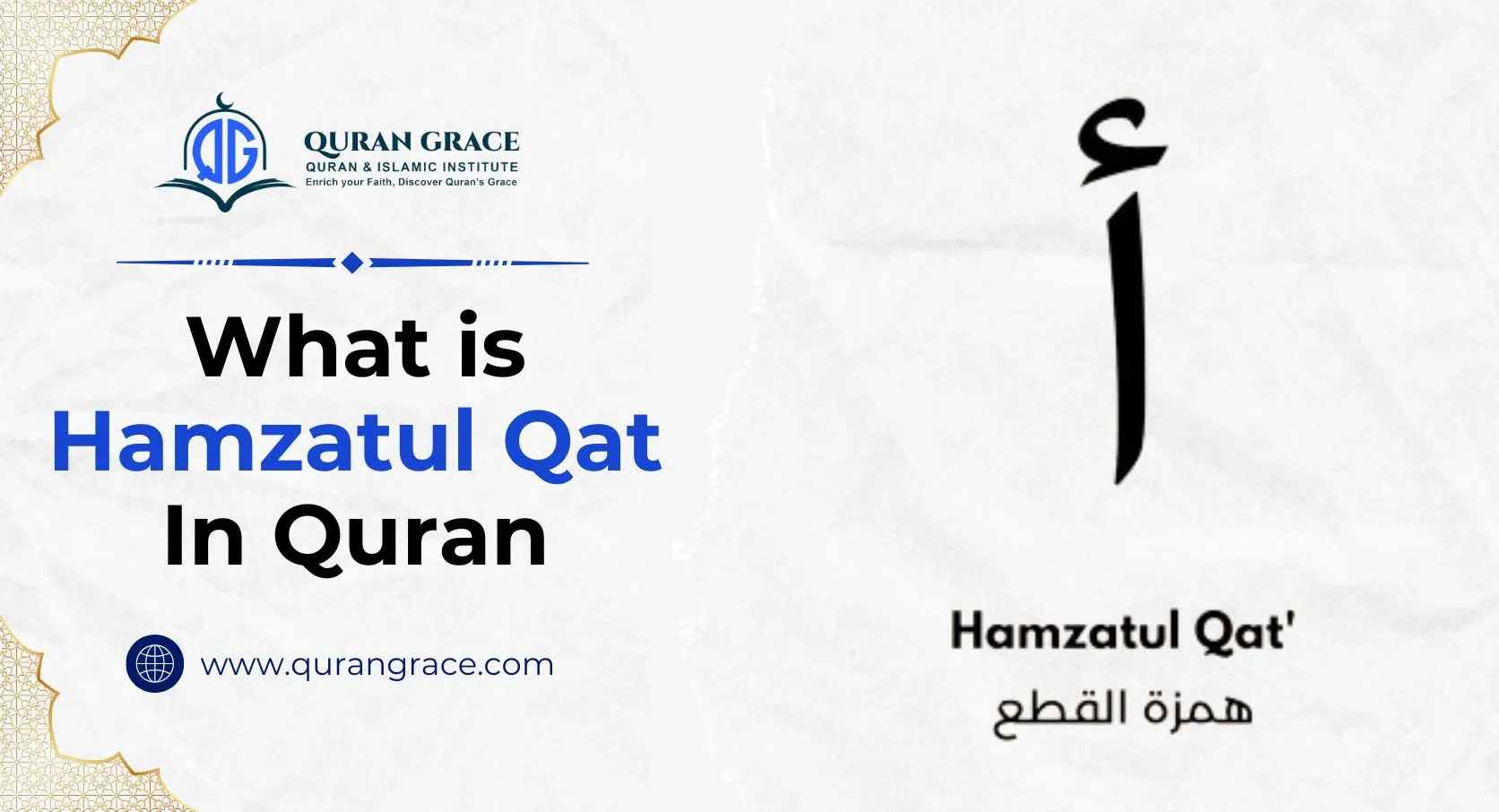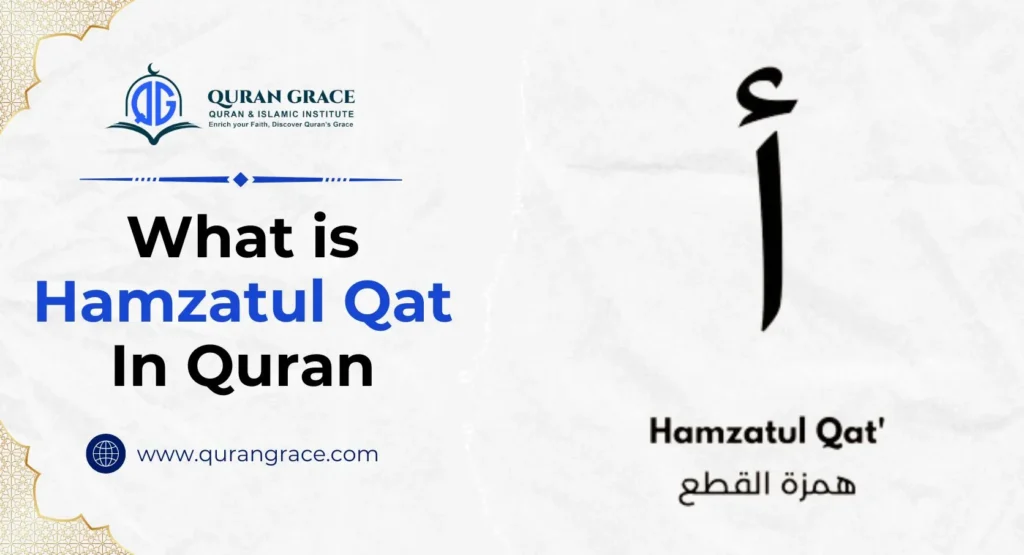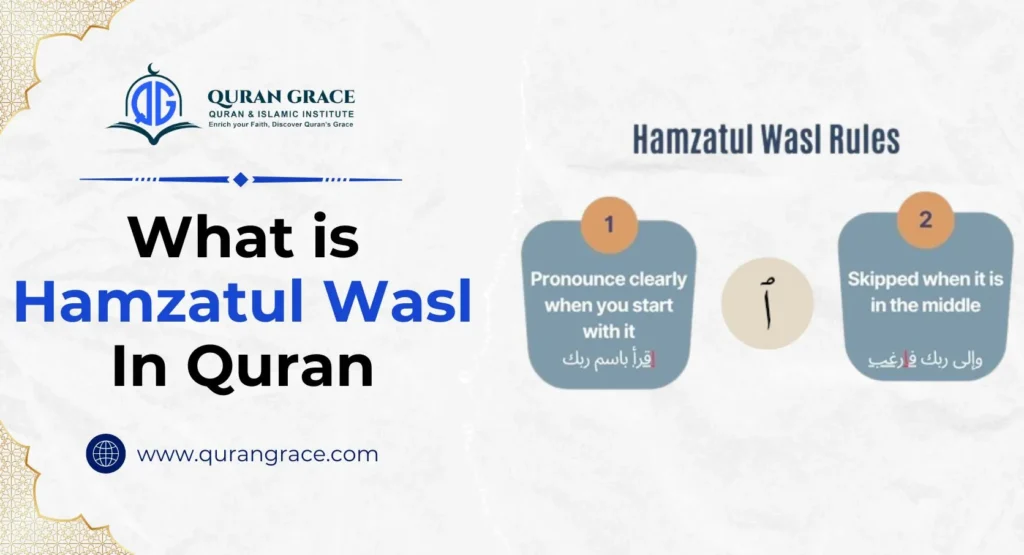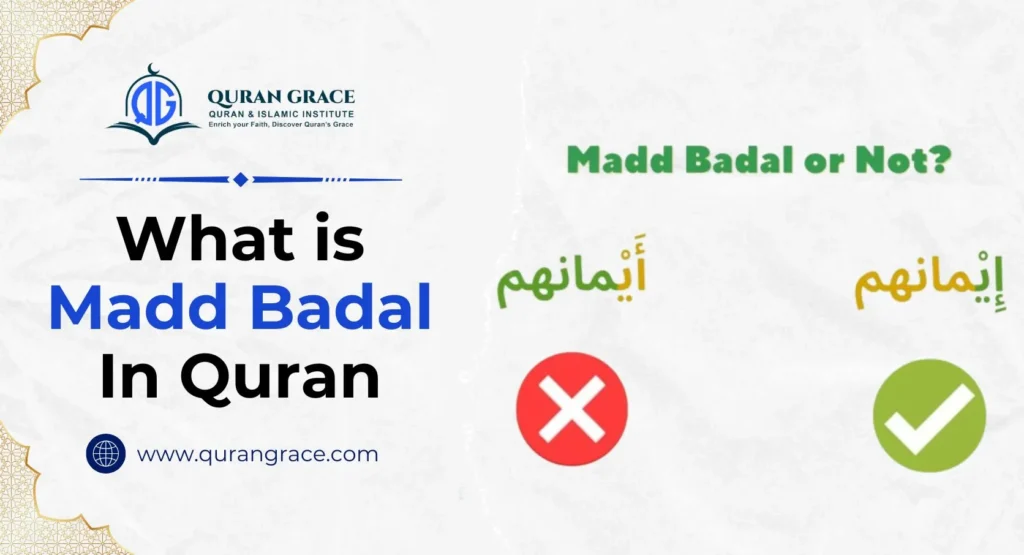In Quranic recitation, the correct application of Tajweed rules is crucial as it plays a significant role in maintaining the integrity of the text. By mastering the rules of Tajweed, specifically Hamzatul Qat, you can enhance your recitation accuracy and deepen your understanding of the Arabic language. Today, we will dig deep into the rules and examples of Hamza tul Qat.
Table of Contents
ToggleWhat is Hamzatul Qat?
Hamzatul Qat (همزة القطع), commonly referred to as the “cutting hamza,” is a crucial component of Arabic pronunciation. This element is consistently pronounced, regardless of whether it occurs at the beginning, middle, or end of a word. The presence of Hamzatul Qat is indicated by a visible symbol (ء), which serves to enhance clarity and prevent any potential misinterpretation of words.
There are two distinct types of hamza, both of which represent a glottal stop and possess different rules and applications that significantly affect the reading and understanding of Arabic words. This blog aims to delve into the intricacies of Hamzatul Qat, offering an in-depth explanation of its rules, examples of its usage, and its presence in the Quran. Additionally, a brief comparison with Hamzatul Wasl will be provided to highlight the differences between these two types of hamza.
Rules of Hamzatul Qat
Hamzatul Qat’, or the definite hamza, has specific pronunciation rules that vary depending on its position within a word, whether at the beginning, middle, or end. Here’s a breakdown of how it functions in each case:
-
At the Beginning of a Word
When Hamzatul Qat appears at the start of a word, it is always pronounced, regardless of its context within a sentence. It can be represented with a fatḥa (أَ), kasra (إِ), or ḍamma (أُ).
Examples:
- أَكَلَ (Akal)
- إِبْرَاهِيم (Ibrahim)
- أُمّ (Umm)
-
In the Middle of a Word
In the middle of a word, Hamzatul Qat retains its pronunciation. For instance, in the word “سَأَلَ” (Sa’ala), the hamza is clearly articulated.
Examples:
- سَأَلَ (Sa’ala)
- جُزْء (Juz’)
-
At the End of a Word
When Hamzatul Qat appears at the end of a word, it is pronounced if it is integral to the root of the word.
Examples:
- مَلْجَأ (Malja’)
- مَبْدَأ (Mabda’)
Note: Quran Grace offers an advanced tajweed course specifically designed to teach Tajweed rules with proficiency.
Hamzatul Qat in Nouns
The majority of nouns, except for the particular instances that Hamzat Al-Wasl addresses, like “أحمد” (Ahmad) and “إبراهيم” (Ibrahim).
Hamzatul Qat In Verbs
Verbs that are quadriliteral and their derivatives include “أكرم” (He honored) and “إكرام” (Honor).
Past, present, and imperative verbs that begin with a hamza include “أكل” (He ate) and “أتى” (He came).
Pronouns and particles that start with a hamza include إلى, أو, أم, إن, and أن.
Hamzatul Qat in the Quran:
Hamzatul Qat appears frequently in the Quran. Here are a few examples:
- Surah Al-Fatiha: الْحَمْدُ لِلَّهِ رَبِّ الْعَالَمِينَ
- Surah Al-Baqarah: الْكِتَابُ لا رَيْبَ فِيهِ
- Surat Al-Kawthar: إِنَّا أَعْطَيْنَاكَ الْكَوْثَرَ
Importance of Hamzatul Qat in Tajweed
The science of Tajweed, which regulates the guidelines for reciting the Quran, depends heavily on Hamzatul Qat. The sanctity of the Quranic text depends on the proper pronunciation of Hamzatul Qat, which guarantees clarity and guards against meaning change.
You can prevent common mistakes like dropping the hamza in continuous speech, which can cause misunderstandings, by being aware of its rules and applications. Also, you can improve your recitation accuracy and fluency and develop a deeper relationship with the Quran by becoming proficient in Hamzatul Qat.
Conclusion
In summary, a distinctive aspect of the Arabic language that is important to Quranic recitation is Hamzatul Wasl. For accurate Quranic recitation and understanding, Hamzatul Wasl must be applied correctly. To understand this rule efficiently, you can join our Quran Tajweed classes, where native egyptian quran teachers will help you out with a customized learning plan of Quran Grace. Join the free trial class today and begin your journey with us.








